The Lexus lineup has earned a reputation for superb quality and durability.
If you're shopping Lexus SUVs, the UX and NX are two of the most popular choices. The UX is smaller and more affordable, while the NX is larger and pricier, but which is the best choice for you?
We compare the UX against the NX here, so you can pick the on that suits you best. Find out how much you could save by shopping nearly new and used cars for sale at Motorpoint.
Lexus UX vs NX compared
| Lexus UX | Lexus NX |
Pros:
| Pros:
|
Cons:
| Cons:
|
Styling and design
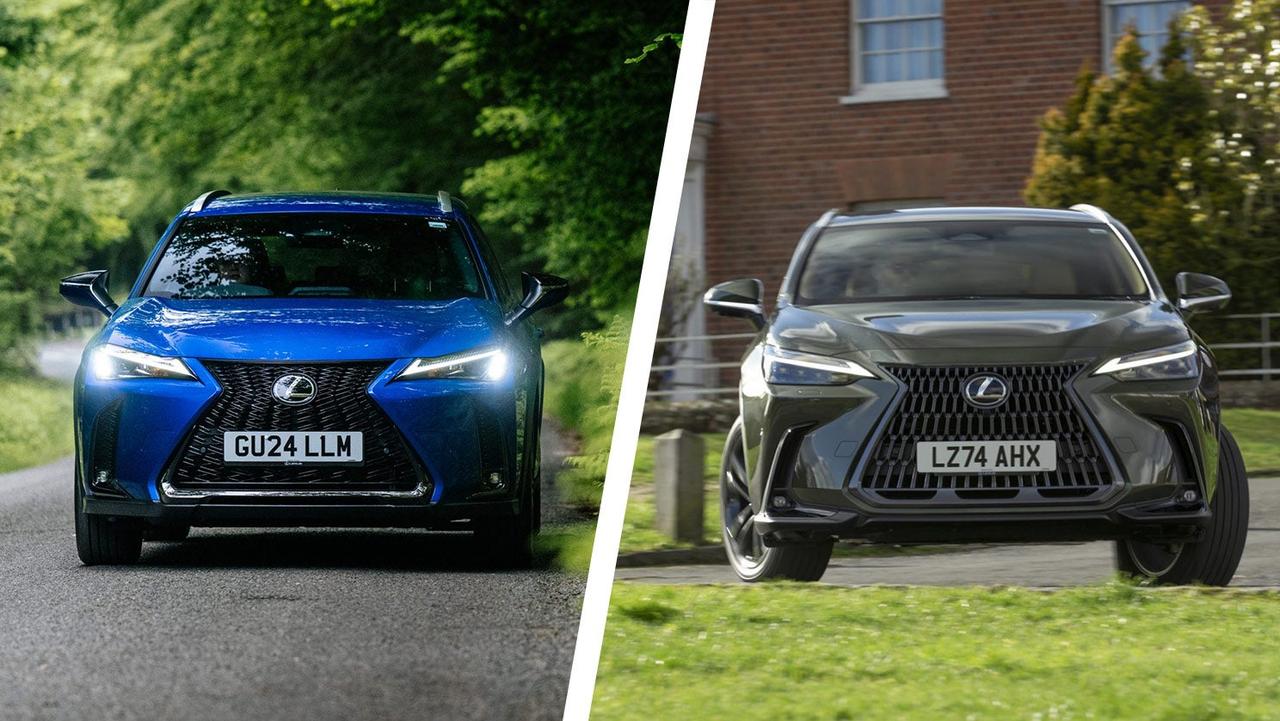
The most obvious difference between these two is their size. Measuring 4,495mm long, the UX is a similar length to rivals like the BMW X1 and Audi Q3 but, in practice, it feels more compact overall. The NX, on the other hand, is 4,660mm long, putting it in contention against the BMW X3 and Audi Q5 – with the larger Lexus feeling much more of a match for its German rivals.
There's an obvious family resemblance between these two. Beady headlight units feature a LED 'tick'-shaped signature, and flank the 'spindle' front grille that's used across the Lexus range. Further back, there's gently sculpted, flowing bodywork that carries on to the rear of the car, where you'll find an oh-so-modern light bar that connects the brakelight units.
In the metal, the UX feels like a big hatchback – a little like an overgrown Lexus CT. That might make it the better choice if you're often tackling urban driving and tight parking spaces. The NX isn't just bigger on paper – it gives the impression of a much larger car when parked next to the UX. That's partially due to its extra length and width, but mostly because it sits so much higher than the UX.
Interior and practicality
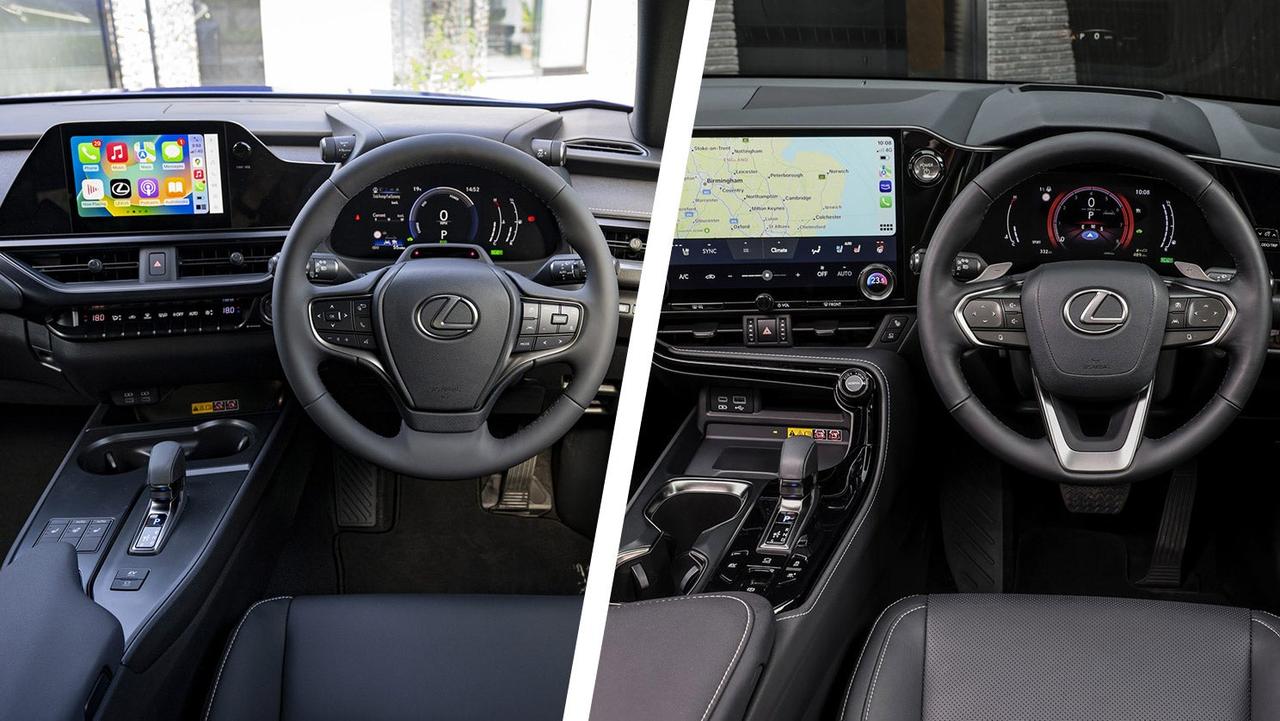
Many of the typical Lexus interior hallmarks are present and correct on both of these models. First and foremost, the material quality is excellent, with soft-touch surfaces, plush upholstery and handsome stitched details helping both cars feel a cut above the ordinary. Build quality, too, is impeccable with no creaks or rattles from interior trim, and no sense of give if you lean hard on the grab handles.
That said, a few minutes behind the wheel of each car is enough to see that the NX is the more modern of the two. An unsurprising observation since it launched in 2022, three years after the UX. The most obvious giveaway is the screen, which is small in the UX and especially fiddly in pre-facelift models, which use a laptop-style trackpad to control an on-screen cursor. In the NX – like the facelifted UX – there's now a full touchscreen system with simplified graphics, but the overall larger screen helps it feel more up-to-date than the UX.
As mentioned, the UX feels like a compact car, even considering its fairly average 4.5-metre footprint. That means rear space is quite tight, with tall adults likely to find their knees scuffing the front seats. The cargo space also falls someway short of the class standard, making it tricky if you're carrying a bulky pushchair, for example. All of these issues are solved by the NX, which offers passenger and cargo space much more in line with class rivals, meaning this is a much easier choice for family buyers.
Engines and performance
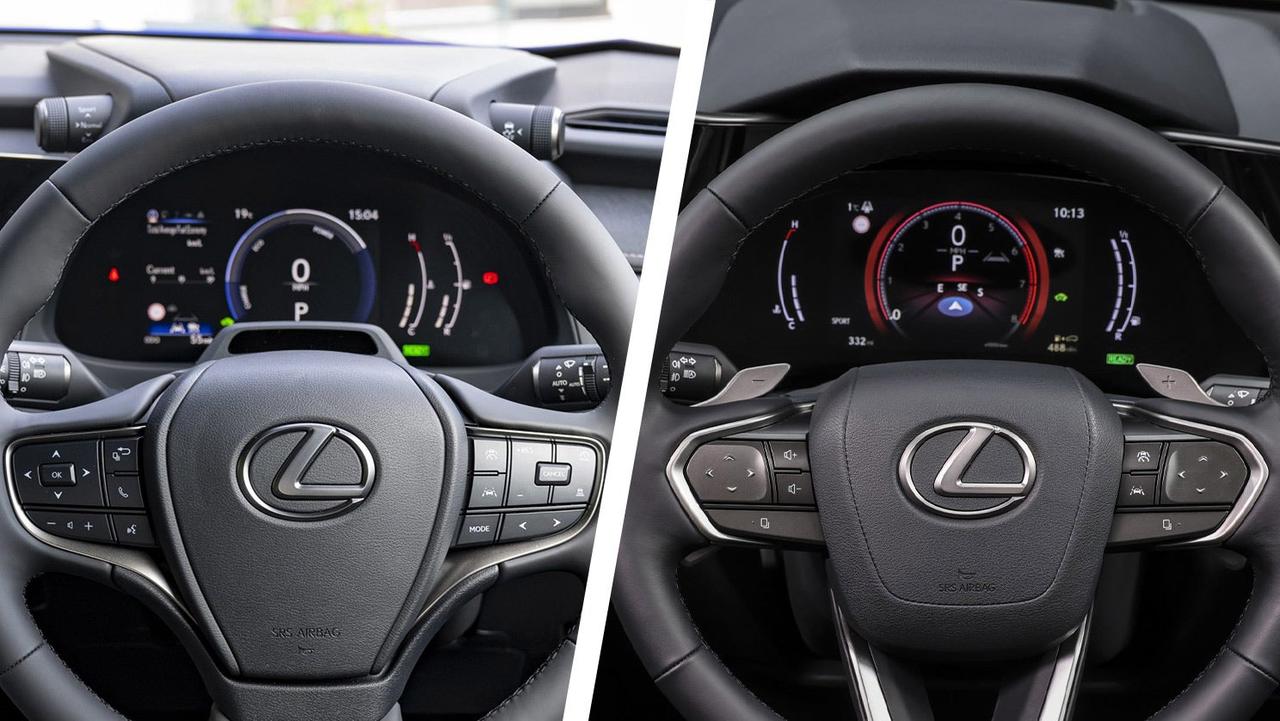
All UX and NX models in the UK are powered by electricity to some extent. Both cars are available with the self-charging-hybrid setups we've come to expect from Lexus and Toyota, and these will suit the majority of buyers as they're efficient, automatic-only and don't require recharging.
Starting with the UX, you've a choice of the UX300h self-charging hybrid or the fully electric UX300e. The former offers the flexibility of refuelling with the ability to return more than 50mpg in mixed driving. Meanwhile, the latter was upgraded in 2023 to a larger 73kWh battery pack, bringing claimed range up to 279 miles. While the electric UX is more expensive as a brand-new car, that quickly reverses on the used market, with nearly new UX300e models undercutting equivalent hybrid versions.
The NX, however, doesn't offer a fully electric model, leaving you a choice of the self-charging NX350h or the plug-in-hybrid NX450h+. These are roughly in line with the engines offered on the NX's Toyota RAV4 cousin, although the self-charging-hybrid version is a little more powerful in the Lexus. Expect comfortably more than 40mpg from the NX350h and as much as 200mpg or more from the NX450h+ if you recharge often. Alternatively, a full charge will return around 40 miles of electric-only running.
Driving
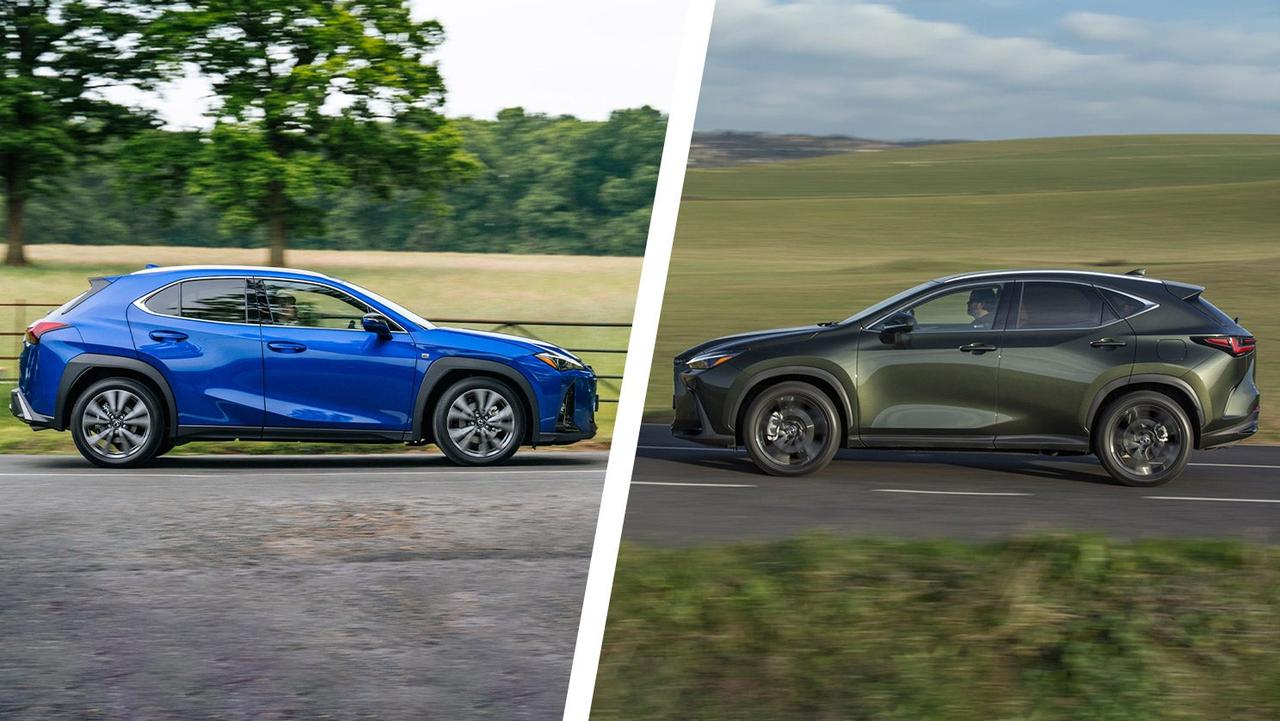
The 'Lexus' experience isn't really defined by scintillating handling, so neither the UX nor the NX are particularly fun to drive. Provided you're not looking to set lap times, however, both of these cars are very easy to drive. Whether you have hybrid, PHEV or electric power under the bonnet, you get sharp off-the-line responses, making it easy to jump through gaps in traffic.
While the UX's smaller frame impacts its practicality, it probably contributes to its more polished driving experience. The suspension setup is fairly firm, giving the UX reassuring body control at high speeds, but with enough sophistication to tune out ride harshness before it hits the base of your seat. Push harder and the UX starts to feel out of its depth, lacking the sportier edge you'd get in a BMW X1, but it's responsive and predictable in regular driving.
Step into the NX and you'll find it's more softer sprung. While that gives it a slightly floatier ride than the UX, it ends up feeling bouncier most of the time – a sensation that's amplified by the NX's extra ride height. You'll rarely notice the NX's dynamic shortcomings at normal speeds but, if you try to drive more spiritedly, you're rewarded with plenty of body roll, discouraging such foolhardy behaviour – it is a Lexus after all.
Value and reliability
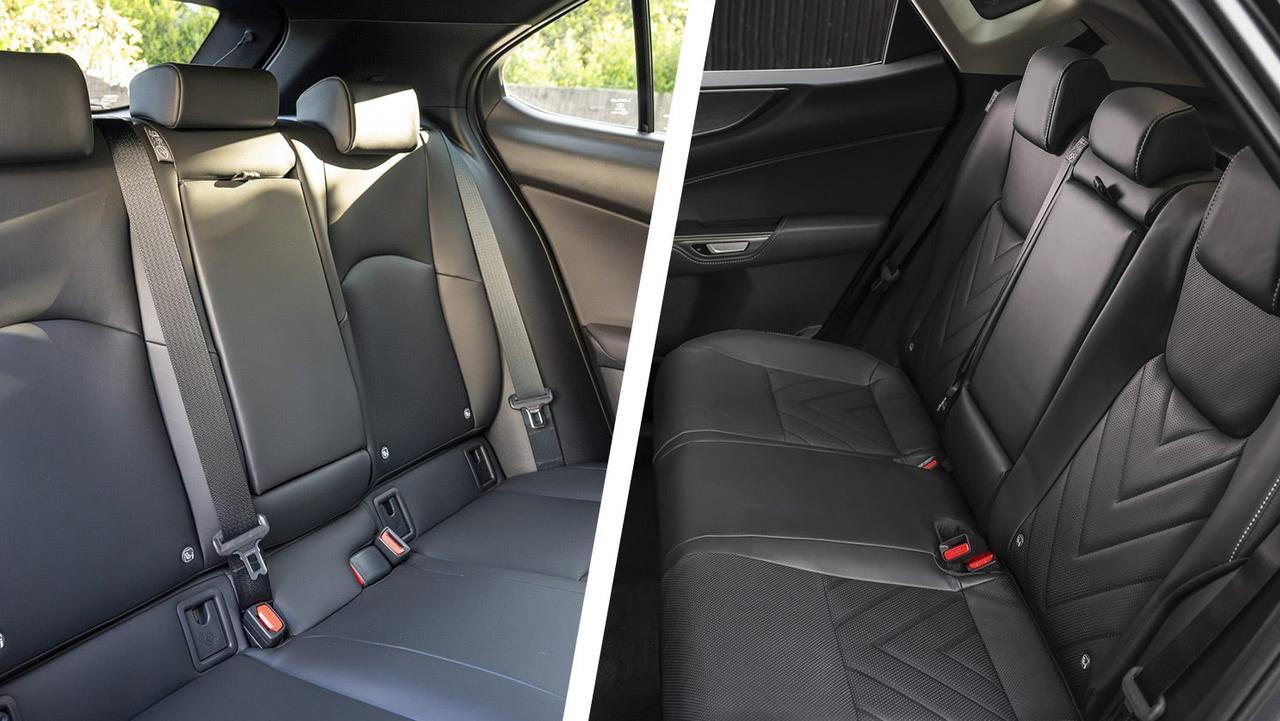
As brand-new cars, there's a sizeable gap between UX and NX prices. The UX costs around £35,000 as a self-charging hybrid, rising to just above £40,000 for the fully electric model. If you want the NX, you're looking at roughly £47,000 for an entry-level self-charging hybrid, with another £2,500 to upgrade to the plug-in-hybrid engine. This gap between the UX and NX is similar to comparable models from BMW and Audi.
Those figures quickly get more manageable once these models hit the used market. The brand-new price gap between UX and NX models remains pretty obvious on the used market, and this will probably have the biggest influence on the one you ultimately chose. At the time of writing, Motorpoint has several UX models for less than £18,000, while you'll find previous-generation NXes for less than £25,000 and current-gen ones closer to £30,000.
Lexus consistently scores very highly for reliability, often securing top positions in consumer surveys. The hybrid systems in these cars are widely used across the Lexus and Toyota lineups, and regularly cover hundreds of thousands of miles with just regular maintenance. The brand's strong reputation is backed up by Lexus' 10-year service-activated warranty, which means many years of worry-free motoring.
Which is best?
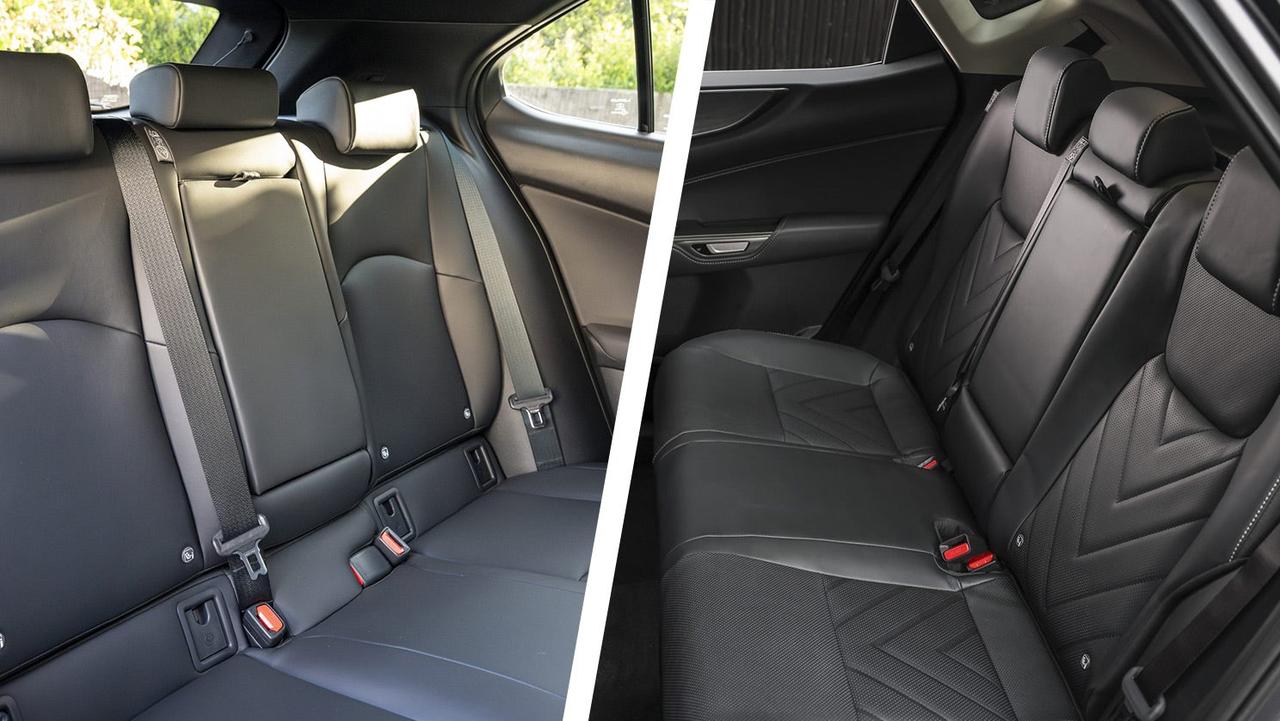
The biggest deciding factor here will probably be your budget. NX models are quite a bit pricier than the UX, although that jump is worth making if you're looking for a family car as the UX can feel a bit cramped.
If you can live with the mediocre practicality, however, the UX is substantially more affordable than the NX and feels a bit more polished from behind the wheel. It's also especially good value if you're shopping for an electric car, with nearly new UX300e models undercutting many similarly premium rivals.
Save thousands on your next car
Find big savings across a massive choice of nearly new and used cars for sale at Motorpoint, including a selection of used Lexus cars.



































